If the children are fed up with phonemes then pull on your wig, smooth down your fake moustache and try teaching in role...
Despite its effectiveness, many people dislike phonics because they feel its mechanical approach to learning takes the joy out of reading. But although systematic, there’s no reason why the teaching of phonics has to be dull or predictable.
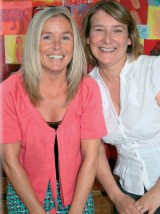 At our school, Aldingbourne Primary in West Sussex, we have worked hard to create a curriculum in which literacy - including phonics - takes a more creative path. The go-slow worksheet approach has been replaced by multi-sensory methods; with art and design being a core ingredient. Teaching in role also plays a big part and we have created a cast of characters that make letters and sounds all the more appealing. Felicity the Phoneme Fairy and Bert the Word-builder are two of children’s favourites, as are the King of Consonants and the Queen of Vowels, who are constantly squabbling.
At our school, Aldingbourne Primary in West Sussex, we have worked hard to create a curriculum in which literacy - including phonics - takes a more creative path. The go-slow worksheet approach has been replaced by multi-sensory methods; with art and design being a core ingredient. Teaching in role also plays a big part and we have created a cast of characters that make letters and sounds all the more appealing. Felicity the Phoneme Fairy and Bert the Word-builder are two of children’s favourites, as are the King of Consonants and the Queen of Vowels, who are constantly squabbling.
Details of our multi-sensory approach can be found in the teaching guide Hands on Phonics (available from collinseducation.com), but for those interested in developing similar activities, we’ve included an outline of how phonics is taught at our school in this article.
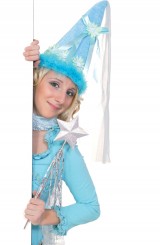 In their first week at school, children meet Felicity the Phoneme Fairy (teacher in role); a kind and gentle soul who flutters into the classroom. Felicity explains that she is no ordinary fairy, but a phoneme fairy, whose job it is to teach the class about their letter sounds. Her first task is to define what a phoneme is, after which she helps children to recognise and blend them together to form words.
In their first week at school, children meet Felicity the Phoneme Fairy (teacher in role); a kind and gentle soul who flutters into the classroom. Felicity explains that she is no ordinary fairy, but a phoneme fairy, whose job it is to teach the class about their letter sounds. Her first task is to define what a phoneme is, after which she helps children to recognise and blend them together to form words.
The children are spellbound by Felicity and love how she rewards their hard work with squeals of delight, glitter showers and even gives them magic fairy dust to wear on their cheeks.
One event that always goes down well is the hunt for Felicity’s missing stars, each of which features a different picture. As children find the stars, they have to identify the initial sound for whatever’s shown.
Combining art with phonics, the whole class then works together to create an interactive display with letters made from sandpaper, bubble wrap, corrugated card, etc. Once complete, children are blindfolded and have to guess atthe different phonemes included in the display using touch alone.
The class goes on to become immersed in a world of phonics. New letter sounds are introduced every day, which children learn using pictures, songs and actions. Every type of learner is engaged and frequent visits from Felicity inspire the children to keep practising their new skills.
When children are ready to begin to read and write, help comes in the form of a northern builder with a moustache that’s as big as his boots (teacher in role). He arrives in the classroom wheeling a barrow of bricks, explaining to the children he is no ordinary builder; he is a word builder. His bricks are special because they have letter sounds written on them, and he shows the children how to build words using his bricks. The children learn to blend the phonemes together to read Bert’s words, and segment Bert’s words into phonemes to write down.
The children are then engaged in a range of multi-sensory activities, including the ‘wheel a word’ game - in which teams race with wheelbarrows to collect bricks to make words - and a visit to the builders’ café to order a delicious bacon buttie.
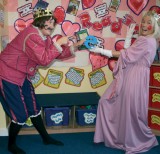 Vowels and consonants are a tricky concept for children, so we like to introduce the differences between them with a visit from a royal princess (teacher in role). The princess arrives in the classroom and explains that Mama, the Queen of Vowels, and Papa, the King of Consonants, keep arguing and fighting with each other. Mama thinks her vowels are the most important letters in the kingdom and Papa thinks that his consonants are more important, because without them the vowels would be pointless. The childrenthen suggest mixing vowels and consonants to make words and the royal row is solved. The children spend the rest of the session playing games that involve mixing vowels and consonants to make words. A great art activity at this point involves cutting vowels and consonants out of magazines and sticking them together to make a vowel or consonant collage.
Vowels and consonants are a tricky concept for children, so we like to introduce the differences between them with a visit from a royal princess (teacher in role). The princess arrives in the classroom and explains that Mama, the Queen of Vowels, and Papa, the King of Consonants, keep arguing and fighting with each other. Mama thinks her vowels are the most important letters in the kingdom and Papa thinks that his consonants are more important, because without them the vowels would be pointless. The childrenthen suggest mixing vowels and consonants to make words and the royal row is solved. The children spend the rest of the session playing games that involve mixing vowels and consonants to make words. A great art activity at this point involves cutting vowels and consonants out of magazines and sticking them together to make a vowel or consonant collage.
One difficulty all teachers face is that a huge number of words in the English language are not phonetically plausible, e.g. everyday key words such as ‘saw’ and ‘they’ or topic-related words such as ‘Egypt’ and ‘tomb’. The challenge is to teach these in a fun and lively way.
In our school, every class - from Reception to Y6 – receives regular visits from Tricky Trevor (teacher in role). Trevor is a very sensible, somewhat nerdy character. He talks in a slow, monotone voice and explains that he is responsible for teaching children how to read and spell tricky words, often using mnemonics to help them do this.
Depending on the age of the children, he talks through a variety of ways of reading and spelling tricky words. For example, he might show them how to identify the tricky phoneme(s), listen to the syllables, identify its root word, or he will make up a rhyme that will help children to read or spell the word in the future.
These words are then displayed on spiky red shapes signalling ‘danger’ around the classroom and the children play lots of games involving these words and regularly practice them to improve their reading and writing.
The impact of this type of teaching is huge. Our children leave the Reception class with a firm gripon phonics, having already begun their reading and writing journey.
They continue this journey throughout the school, building on their word and sentence level skills and blossoming into confident readers and writers.
Moreover, through this approach we find that we enjoy teaching phonics as much as the children enjoy learning about it.
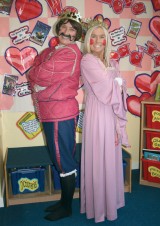 • Make a phoneme sculpture. Ask each child in the class to bring an object from home that begins with your chosen phoneme. Challenge the children to use the objects to make a sculpture of something that begins with the same phoneme. Photograph the finished sculpture.
• Make a phoneme sculpture. Ask each child in the class to bring an object from home that begins with your chosen phoneme. Challenge the children to use the objects to make a sculpture of something that begins with the same phoneme. Photograph the finished sculpture.
• When learning about syllables, ask the children to draw and colour a picture of their choice. They then must cut the picture into the number of syllables in that word. They then mount the chopped up picture onto paper and display the syllables underneath.
• After learning about the diagraph ‘ch’, ask the children to draw a ‘ch’ word, using pictures to make each letter, e.g. to make the shape of the word ‘cherry’ out of cherries.
Liz Webster is Headteacher and Sue Reed is Deputy Head at Aldingbourne Primary School. Between them they have written five titles for the Belair on Display series available from Collins Education (collinseducation.com).
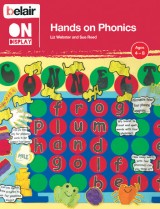 In Hands On Phonics , Liz Webster and Sue Reed explore 33 phonic themes through colourful and original activities and displays. Visit belaircreative.com for more information.
In Hands On Phonics , Liz Webster and Sue Reed explore 33 phonic themes through colourful and original activities and displays. Visit belaircreative.com for more information.
Becoming a teaching school
Ace-Heads
How to use modelling to engage pupils with autism
Ace-Art-And-Design
Boosting children’s self esteem
Ace-Classroom-Support
